eLife episode 19: Herpes vaccine, and flies with brain damage
In this episode of the eLife podcast we hear about herpes, breweries, model organisms, social interactions in rats and traumatic brain injuries in flies.
In this episode
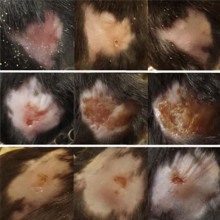
00:32 - Herpes simplex virus vaccines
Herpes simplex virus vaccines
with Betsy Herold, Albert Einstein College of Medicine
Herpes Simplex Viruses or HSV cause cold sores and genital infections, and they're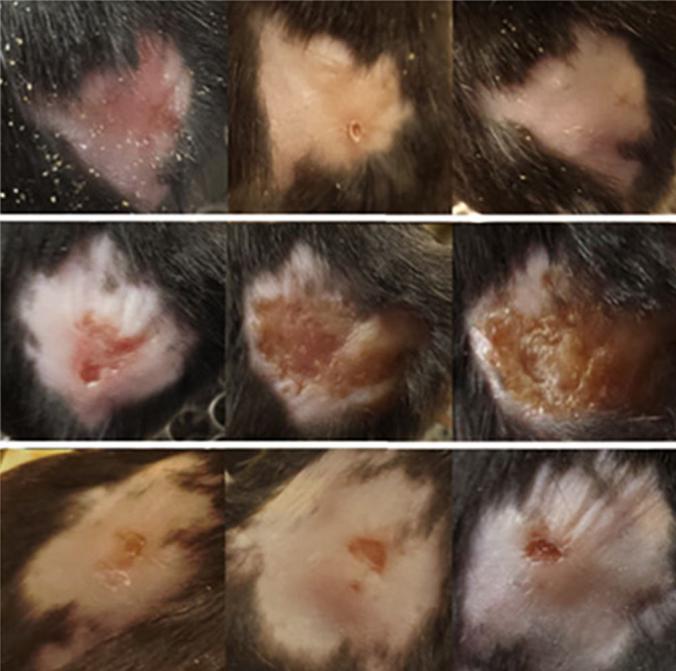 doubly unpleasant because the virus is carried for life within the nervous system. This allows it to reactivate periodically to cause new infectious skin lesions that are also exquisitely painful. And despite years of effort, scientists have not yet developed an effective vaccine to block the infection. But now, by removing a component of the virus coat, a protein called gD, Betsy Herold has made viruses that can fully protect animals against infection with either the cold sore, Type-1 strain of HSV, or HSV-2, the genital variant.
doubly unpleasant because the virus is carried for life within the nervous system. This allows it to reactivate periodically to cause new infectious skin lesions that are also exquisitely painful. And despite years of effort, scientists have not yet developed an effective vaccine to block the infection. But now, by removing a component of the virus coat, a protein called gD, Betsy Herold has made viruses that can fully protect animals against infection with either the cold sore, Type-1 strain of HSV, or HSV-2, the genital variant.
Betsy - The primary strategy that people used in the past really focused on one major protein that that the virus makes, glycoprotein D. That protein induces high levels of antibodies, and antibodies usually protect you from infection. But in this case, in the herpes case of the Herpes Simplex Virus, these antibodies protected animal models from infection but did not appear to protect humans in large clinical trials. So, we thought maybe those antibodies are interfering in some way with making the kind of immune response that would be more protective. So, we deleted that protein from the virus.
Chris - How then did you grow the virus, if you took that gene away from it so that it couldn't make that gD? How did you grow it?
Betsy - Glycoprotein D is essential for the virus to get into cells. So, what we did is we grew it on a cell line that provided the HSV-1 glycoprotein D. That just provides the protein on the outer surface of the viral envelope, allowing the virus to get in but once that virus is inside a cell it doesn't have the DNA to make more of that protein. And therefore, it also doesn't continue to spread and doesn't cause any kind of disease.
Chris - So, you get, effectively, a replication-defective virus. It goes in, it hits the cells once but nonetheless expresses all of the panoply of genes that HSV would normally express, showing to the immune system this is my genetic hand and making a diverse immune response. What critically, though, does that do to the ability of the animal to then be infected with a wild type, a normal virus that does have gD?
Betsy - That was the question - would this work as a protective vaccine? So, when we took mice and immunized them with this, and then challenged them with very high doses of wild type virus, we observed 100% complete protection. Not only do we protect them from disease, but unlike the previous vaccine candidates, we prevented the virus from establishing what we called latency - the ability of the virus to hide out inside your nerve cells and therefore cause persistent or recurring infections. This vaccine completely prevented that.
Chris - Is that because it just completely limited the ability of the agent to replicate at the mucosal surface and for that reason, it couldn't then access the nervous system, or was there some other reason why it was disabled in its ability to get into the nervous system?
Betsy - To answer that question, we did a different type of experiment, and that's an important question. And so what we did is we asked, first of all, whether the immune protection that the vaccine was inducing was mediated by antibodies - whether it was mediated by T-cells, the other major half of your immune system. And when we only gave naïve mice antibodies that came from the vaccinated animals, they were completely protected. So, that told us that it was those antibodies. And then to get at your question, we then used those antibodies and looked to see whether they got into the sites of infection. Did they get into the fluid in the genital tract and did they protect? And indeed, they did. So, the answer to your question is that it is immediately clearing the virus out of the genital tract.
Chris - Have you tried doing the experiment where, having used your vaccine candidate to protect your animals against HSV-2, you come along and challenge the animals with HSV-1, the relative that normally causes cold sores.
Betsy - Yes, and the vaccine protected against both HSV-2 and against HSV-1.
Chris - And what about the converse, which is that the majority of the population carry HSV-1. They're infected very early in life, maybe by the age of 3, and up to 80% of people have already got it. Can you still protect people who have already got HSV-1 against HSV-2 using your candidate?
Betsy - The answer to that question is we don't know, and we do need to find that out. But that is a critical question because if we want to use this vaccine and give it to older children, let's say, we need to make sure that it would work if you're already been exposed to HSV-1.
Chris - Have you any idea why removing this very potent and essential stimulus that the virus would normally use when it infects a cell, should release the immune response in this way and drive this very powerful immune effect? Do you think that the gD that's normally there is having some other effect on the immune system other than just helping the virus to infect cells?
Betsy - I think that's absolutely the right thought process, and there's a couple of possibilities there. The first one is just that that glycoprotein D is such a strong immunogen it's able to make such a good immune response that all of your immune system is focused on that, and it forgets to make antibodies to other viral proteins, and that's one possibility. And then it would be that those other viral proteins and the antibodies you make to them are the more important ones in protecting against human disease. The alternative is that glycoprotein D actually interferes with making the kind of response we want. Maybe it blocks that from happening, and that's very likely because we already know that this glycoprotein has an ability to modify the human immune response.

06:46 - Modelling Traumatic Brain Injury
Modelling Traumatic Brain Injury
with David Wassarman and Barry Ganetzky, University of Wisconsin-Madison
Every year thousands of people are victims of traumatic brain injuries, or 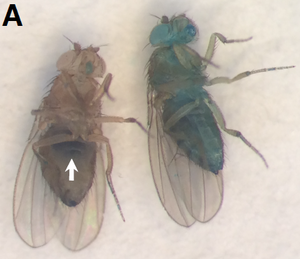 concussion. The causes range from sporting incidents to car crashes, but the outcomes and the best way to manage head injured patients are very hard to study because no two injuries are alike. Now, David Wassarman and Barry Ganetzky have solved the problem by coming up with what can only be described as, well, a high-tech fly swatter.
concussion. The causes range from sporting incidents to car crashes, but the outcomes and the best way to manage head injured patients are very hard to study because no two injuries are alike. Now, David Wassarman and Barry Ganetzky have solved the problem by coming up with what can only be described as, well, a high-tech fly swatter.
David - We think that this complexity that is part of traumatic brain injury can be studied in a simpler animal system, and we have been doing this in fruit flies. The brain in the fly is encapsulated in a structure that's very similar to the human skull. A mechanical injury to the outside of the fly head will cause that brain to ricochet around inside this capsule, causing injury to those brain cells which are very similar to the cells in the human brain.
Chris - So, how did you create an objective way of doing this - a standardized injury to a fly then?
Barry - We created an instrument that we called a HIT device, which stands for High Impact Trauma device. We take the flies and we put them in a container and then we uniformly strike that container against a solid surface so that all of the flies in the container receive equivalent injury.
Chris - And Barry, when the flies are traumatized in this way what happens to them? What do they look like?
Barry - We've made high-speed movies so we can watch the flies subjected to this treatment. There isn't any noticeable physical external damage to the flies but a proportion of the flies become, I think it's fair to say, knocked out. They become immobilized, they might show what one would think of as a seizure - some twitching of the legs and wings - but they will remain paralyzed for about 5 minutes or so. Then they will eventually recover. They will be somewhat uncoordinated and woozy, which is very similar to what humans who have suffered a concussion would exhibit.
Chris - And David, what happens to them once they've recovered in this way? Do they then go back to being normal?
David - Yeah. So, we think that all of the flies have deleterious outcomes to various extents. The major thing that we see within a very short period of time is that a large fraction of them do die, and that's one of the things that we measure. And then we can take the surviving flies and study their behavior, as well as the molecular events that occur inside organs of that fly.
Chris - And Barry, when you ask those questions - what happens to the internal organs? - what do you see? Do you see consistent features emerging following traumatic brain injury?
Barry - One of the first things that we did when we were subjecting flies to traumatic brain injury is to ask whether there are genetic differences among different strains of fruit flies that made them more or less sensitive to traumatic brain injury. There were differences. We tracked down some of the genes that were responsible for those differences that led us to being able to detect particular secondary injuries that were consistent and reproducible, the most remarkable of which was a breakdown of the barrier that separates the contents of the intestine from the circulatory system.
Chris - So, you're saying that a brain injury has a subsequent consequence for the intestinal system. This is not an injury sustained at the time of the trauma. There's something going on downstream of the brain injury that does this.
David - Yeah. So, we can feed the flies a blue dye. We can see how long it takes for that blue dye to leak out of the intestines. We see significant breakdown at about two hours after the initial injury.
Chris - What are the consequences of this enhanced intestinal leakiness downstream of the brain injury? What does it do Barry?
Barry - There are two consequences. When the barrier breaks down, there's a leakage of material out of the gut, for example, bacteria. We could ask whether some of the chemicals, in particular certain sugars, out of the intestine into the circulatory system were resulting in bad consequences. And we could test that as well by taking flies after they had been subjected to traumatic brain injury and putting them on a water diet as opposed to their normal food source that was rich in sugars. Surprisingly, it turned out that when flies were fed on water after traumatic brain injury, those flies in fact survived better. So, there's some negative consequence of the elevation in sugar leaking out of the intestine into the circulatory system after a traumatic brain injury.
Chris - And David, do you think it's just glucose, or do you think that glucose may be a proxy marker for the fact that other "stuff" is coming across from the intestine? And perhaps coupled when you have injury to the brain, you also get a dismantling, albeit temporarily, of the blood-brain barrier. Perhaps that increased permeability enables something from the blood, not necessarily just sugar, but something to go into the brain that then has a deleterious effect on that organ.
David - I think that's definitely a possibility, that something else could be playing a role. But our data in flies actually show that if we lower the levels of glucose through feeding flies water instead of food that contains high levels of sugar; that did reduce the poor outcomes in flies. So, what we think is that the high levels of glucose are producing some kind of signal. And we need to understand what that signal is, what's occurring downstream of that after that.

13:13 - Biology in a brewery
Biology in a brewery
with Nicholas Bokulich, NYU Langone Medical Centre
Microbial contamination is a big problem in some situations but is also essential in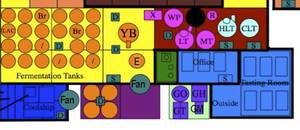 others, like beer making. So, what is the secret of afine ale and how do brewery practices influence the movement of microbes around a plant? Nicholas Bokulich has been using DNA techniques to find out.
others, like beer making. So, what is the secret of afine ale and how do brewery practices influence the movement of microbes around a plant? Nicholas Bokulich has been using DNA techniques to find out.
Nicholas - What we were looking at here was how microbes move around food production environments. Breweries are a great place to explore this because microbes are essential to beer production, but they're also involved in spoilage of beers. So, we thought this would be the perfect place to really pattern the microbes as they move around throughout the air.
Chris - And you can follow that, can you?
Nicholas - We can. We go around the brewery at different times of year and we take a little swab. It's just like a, you know, a Q-tip for your ear. Rub it against different surfaces, different pieces of equipment, we collect different samples of ingredients, samples of beer. We take this all back to the lab, extract its DNA, and then sequencing instruments help us look at every individual piece of DNA. Which is kind of like, you know, crime scene investigation but of microbes. You can identify exactly what organisms are there.
Chris - And when you do this, what do you learn? How does this change our understanding of what's going on in these sour beer, these coolship ale processes, that gives them their unique characteristics?
Nicholas - We're looking at which microbes are in fermentation, which microbes are in the fermentation environment, at different times throughout the year. We can track their movements throughout the year and we can understand how they move from place to place, how they're introduced to the product and make it into the fermentation.
Chris - Tell us more about, actually, what you saw when you did these experiments.
Nicholas - Looking in this brewery, the microbes have favorite hangouts. For example, some microbes, certain yeasts, and certain bacteria would be present on the floors of the brewery. Others kind of hung out around the barrels, others around the grain, and they kind of stuck to these areas season to season. So, we could see that there were certain microbes associated with certain areas of the brewery and ingredients in the brewery. Some liked it before fermentation, some liked it areas where actively fermenting beer was, and some liked it with finished beer was kind of sitting around.
Chris - What's, kind of, new here? I know you can actually put some identities on some of these microorganisms, but if you'd asked a microbiologist to speculate wouldn't they have predicted exactly what you saw happening anyway?
Nicholas - That's true. As far as the microbial identities go, the most exciting part I think is actually looking at the hop-resistance genes. I think that's probably the newest and most interesting, exciting part of this paper.
Chris - Tell us a bit about that.
Nicholas - These are genes that have, specifically lactic acid bacteria, contained within them that help them resist these antimicrobial compounds that come from the hops. These are compounds present in the hops naturally and when the hops are boiled, it releases and changes these compounds to increase their antimicrobial potency. And so, this is one of the reasons why hops have actually been used in beers traditionally for the past several centuries, because traditional brewers recognized that if you put hops in beers it made them less susceptible to contamination from negative microbes. But lactic acid bacteria living in the brewery environments for such a long time have actually evolved and adapted to meet this challenge and developed these components that actually protect them against these antimicrobial compounds. Help them pump them out of the cells so that they don't kill the cells. However, no one has actually looked at these within a brewery environment like this to understand how common and how abundant they are. And so by looking at this, we were able to see beer contact promotes the growth of these microbes and retention of these hop resistance genes on different pieces of equipment.
Chris - Are we seeing a problem in the future for brewers? I would use the, well I'm going to use the horrible phrase, are we sort of brewing up trouble for ourselves in the sense that as these things become more common, because they're being strongly selected over time to become hop-resistant, are we going to have to start adding antibiotics into our beer in order to suppress these unwelcome invaders?
Nicholas - So, that's a good question. I think the answer is really, no. Beer contamination has been happening for centuries. This is a natural product. Hops are a natural product and they contain a number of different antibacterial compounds. And so while bacteria that contain these hop-resistant genes are usually very adept at resisting these hop antimicrobial compounds, they're not completely immune. Larger doses of hops can wipe them out.
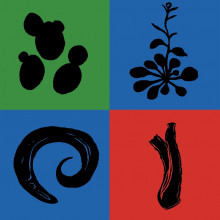
17:50 - The wild frontier: animal models
The wild frontier: animal models
with Ian Baldwin, Director of Max Planck Institute for Chemical Ecology
Unlike their divaesque human equivalents, animal models have contributed 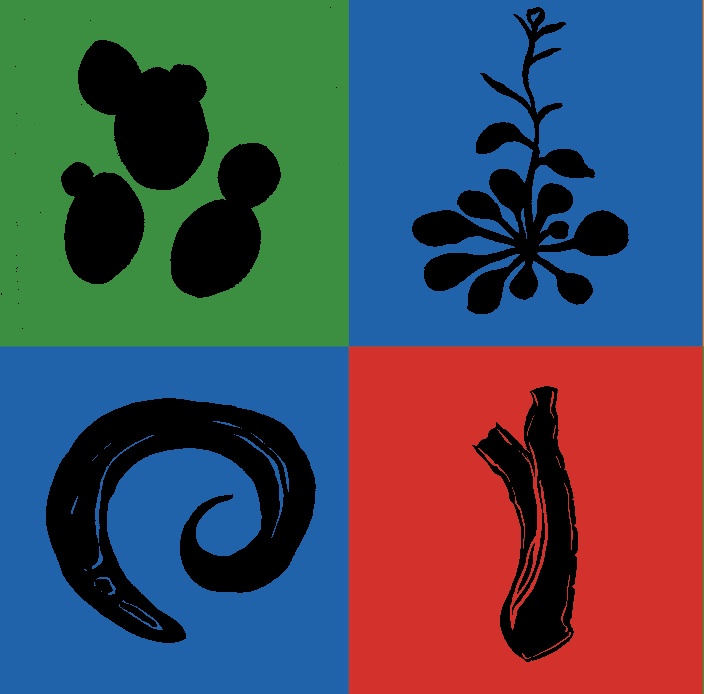 enormously to biological research over the past few decades. But how does life in the lab compare to life in the wild? And what can researchers gain from knowing much more about the natural history of the organisms that they use in their research? eLife are exploring these questions with a new series of articles called, The Natural History of Model Organisms. Ian Baldwin is the series editor.
enormously to biological research over the past few decades. But how does life in the lab compare to life in the wild? And what can researchers gain from knowing much more about the natural history of the organisms that they use in their research? eLife are exploring these questions with a new series of articles called, The Natural History of Model Organisms. Ian Baldwin is the series editor.
Ian - There is very little communication between people who know how to use the incredible, powerful, molecular tools that been developed in the last three decades, and the people who know how to figure out natural histories of organisms and identify them and characterize them in their natural environment. That's a particularly sad situation because right now is one of the first times in the history of biology it's possible to actually utilize all the amazing things that have evolved, to actually analyze them at a molecular level and even be able to use them, because you can take out traits from one organism and put them into another organism. So the reason for this set of articles here is to take the particular organisms that have become the supermodels for the molecular biologists, the ones who've been able to really understand fundamental biological principles by developing an organism and putting all the tools so that you can actually get to the genetic basis of particular traits, and to explore where those organisms came from.
Chris - Why do you think this will solve the problem? Why will having the Claudia Schiffer of the C. elegans world, how is that going to help to solve this problem?
Ian - I think it's going to help solve the problem because amongst model system biologists, they're beginning to run out of things to work on. They're beginning to get a bit bored with the types of questions that you can study when you're only studying Claudia Schiffer. And it turns out that the nearest relatives of Claudia Schiffer actually have other much more interesting traits. I think that we are at a stage when both the ecologists who want to learn and use these molecular tools, as well as the molecular biologists who have been using particular model organisms, want to start to branch out and look at other organisms. So, I think it's a time that's ripe for that, and also it's a time that's right because of the advent of cheap sequencing that's allowing everybody to sequence the genome of every organism that they can, at a reasonable cost. And with the development of these genome editing tools that are coming online, it means that the whole business of being a model organism and a non-model organism is a divide that is becoming blurred, and pretty soon most of biology is going to be able to be accessed in the same way that the handful of models are currently.
Chris - So, a person who comes and picks up these reviews or this sequence of reviews - what are they physically going to experience? How have you approached this?
Ian - We've approached it by asking people who are this sort of this new generation of biologists. Usually, these are biologists who were trained on the molecular side of the divide and are beginning to go out into the field and find the wild relatives of these models. Figuring out where they live and what they do, and how they defend themselves, and what sort of other traits they have, and also to start looking at their nearest relatives. And as we mentioned in the article series here, the ones that were domesticated for laboratory life all seemed to share a particular suite of traits that allow them to be easily domesticated. They're boom and bust type of organisms, they reproduce easily, have very fast growth rates, they're not very finicky about the type of culturing techniques that you have to keep them under. Those are not traits that are shared by the nearest relatives in almost every single one of these model organisms. Those sorts of natural history details are what you're going to find out when you delve into the individual articles.
Chris - When will the items be coming out? What's the sort of style or format of them? What will a person get out of each individual article? How will it help them in their biology?
Ian - There's going to be an introduction that Jane Alfred and I have written to the series. And then, there's going to be a brief exposé on Zebra fish, on maize arabidopsis, on C. elegans - the nematode, and then a couple of microorganisms - E. coli and budding yeast. In each one, an expert will tell a very intriguing vignette about the life history of this model that so many scientists only consider as a reagent-grade organism, not something that lives outside the lab. And I think it's going to enrich their understanding of that organism as they go to the lab and work with it. And also the fact that some of these models all come together in various places. For example, you know, on rotting apples you find not only sometimes yeast but also C. elegans loves rotting apples. And Drosophila of course visits rotting apples, and even C. elegans hitchhikes on Drosophila occasionally in order to catch a ride onto the next rotting apple. So, there's some convergence of these model organisms in the real world with each other the specialists may not have realized.
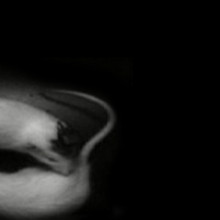
23:10 - The brain's social circuit
The brain's social circuit
with Alex Tendler, Haifa University
When you meet someone new, what goes through your mind? And is it really true that first impressions last? Working with rats, Haifa University's Alex Tendler argues that the answer is definitely yes. And your brain probably puts itself into a special pattern of neurological activity on that first encounter, and this controls how you respond and form an opinion of the individual you've just met.
true that first impressions last? Working with rats, Haifa University's Alex Tendler argues that the answer is definitely yes. And your brain probably puts itself into a special pattern of neurological activity on that first encounter, and this controls how you respond and form an opinion of the individual you've just met.
Alex - We've tried to identify electrical signals in the brain during social interactions between rats and to achieve that, we implanted electrodes into rat's brain at six different regions that are related to social recognition and memory. Tiny wireless transmitters were mounted on the rat's head and the rat was subjected to meeting with other unfamiliar animals. During each encounter, video and brain signals were synchronized and could be seen in real time.
Chris - Can you therefore plot a sort of time course - which brain area activates first and then where it then sends signals to in that network of related brain structures?
Alex - The interesting thing was it was not like one after the other. It works in a synchronized manner. We found a profound rhythmic electro-activity, that reflects animal's excitement throughout brain areas, that's responsible for social recognition. It was particularly strong and synchronized in the first encounter when the rat met unfamiliar rats.
Chris - Do you think that the rhythms that you see are the product of all of these areas talking to each other, or does one of them act like a metronome and make all of them beat the same tune?
Alex - I think that special communication protocol synchronizes between relevant brain regions and tells the brain how and in what frequency to operate.
Chris - And so would your hypothesis be that when you introduce an animal to a new social situation, this particular pattern of brain activity is elicited, which then puts these different brain components in this network into a very receptive or aroused mode so that they're paying attention to what's going on socially?
Alex - Yes. It's alike for different excitements. There are different brain states and different communication protocols. That's what we see because when we check the same experimental protocol with an inanimate object, instead of a rat, we didn't find such synchronization, despite the fact that from behavioral point of view rats show the same interest to the objects too. When we tried different feelings like fear, we also found synchronization between the regions related to memory but in completely different frequencies.
Chris - So this appears to be this pattern of brain activity of a certain rhythm unique to animals that are having a social engagement.
Alex - Exactly. And we found that this synchronous brain activity continues even after the end of social encounter, meaning that the brain enters into a kind of social state.
Chris - But then, if you reintroduce the animal that's just produced that impression, do you get the same big surge of activity again or the next time are they less excited to see each other?
Alex - It's much, much lower. They are less excited.
Chris - What about if you repeat the experiment with an animal that's not socially active. So, if I put in a sleeping rat. Would it respond in the same way? Can it recognize there is another rat here or is this purely down to active behavior on the part of the individual that's being met?
Alex - Yeah. We tried it with anesthetized animals also, and there is no connection with the behavior of the animal that we exposed to. It's the animal and not the object.
Chris - Do you think that what you've discovered here has implications for human situations? Because there are some individuals who have certain conditions, and I'm thinking Asperger's type individuals, who have difficulty relating to other individuals socially. Do you think that there are implications from this work for understanding what's going on with them?
Alex - Yeah. I think that here for the first time, we showed that there are different feelings influencing memory formation and we show that there is kind of communication protocol between brain areas. And it is known that problems like Asperger and the other autistic spectrum disorders there are problems with communication between different brain regions. So, it can help us to recognize the problems and maybe to treat them.









Comments
Add a comment